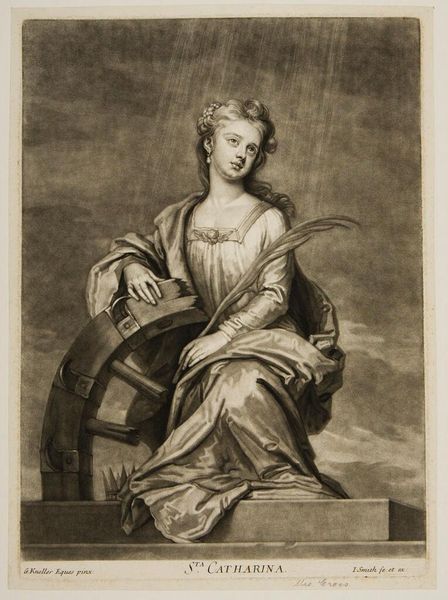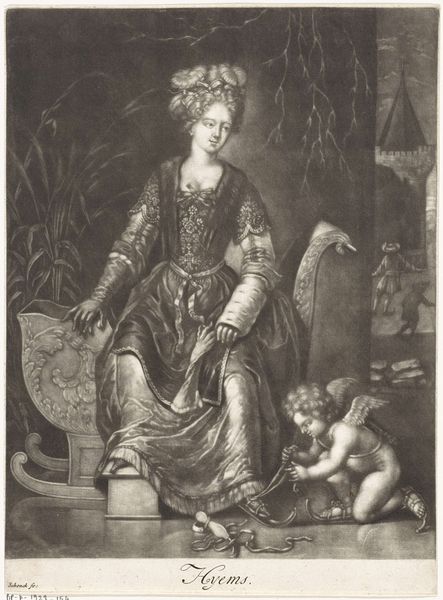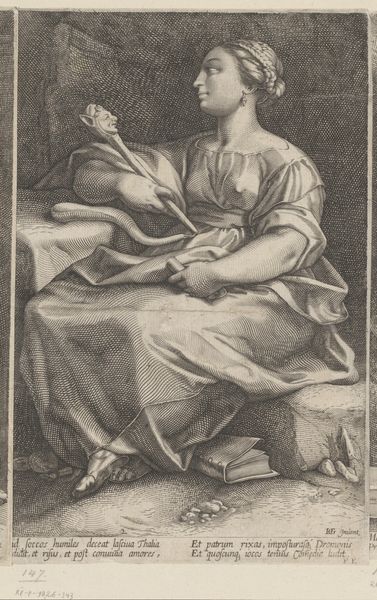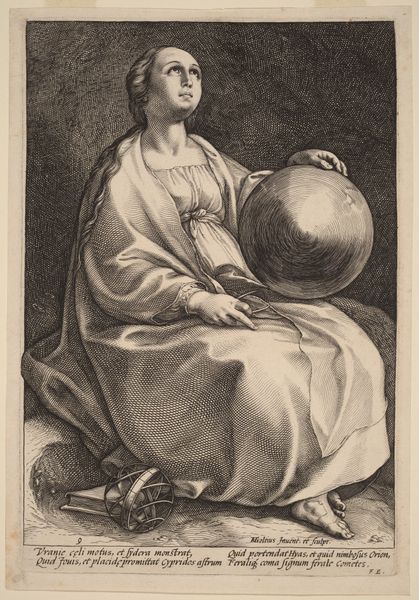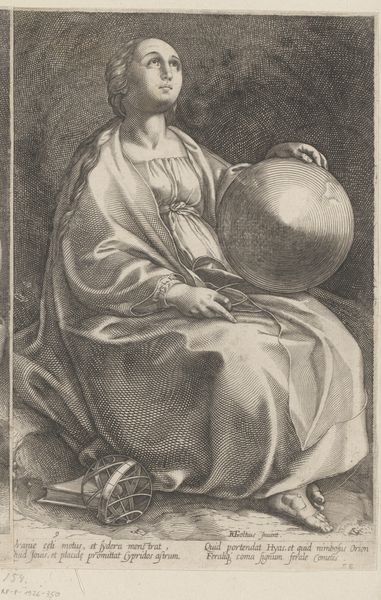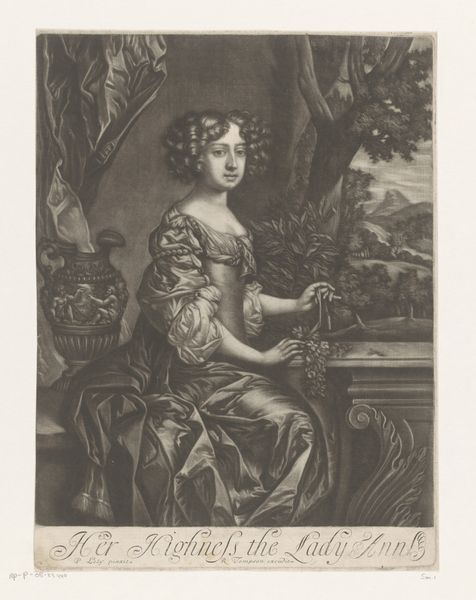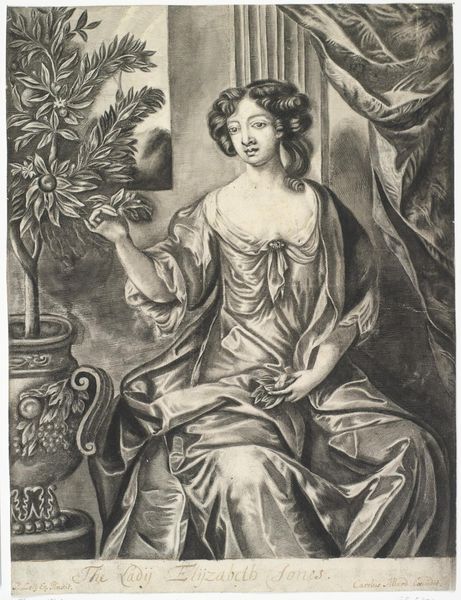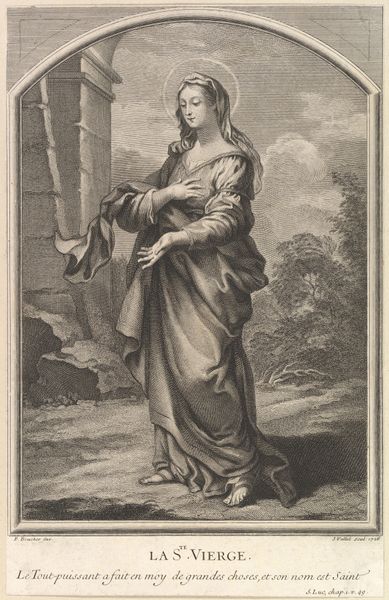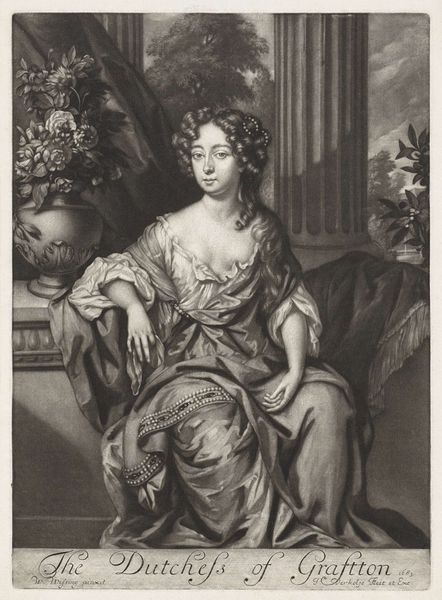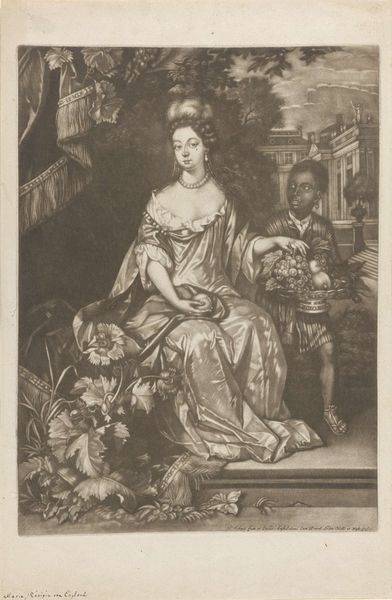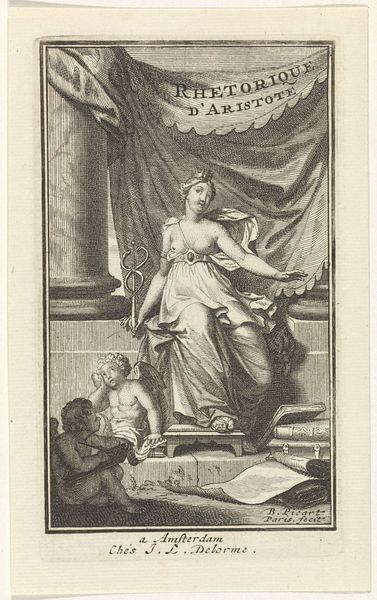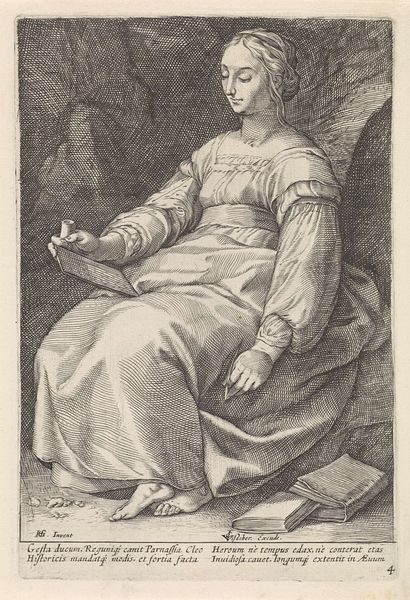
print, engraving
#
portrait
#
baroque
# print
#
charcoal drawing
#
figuration
#
history-painting
#
engraving
#
portrait art
Dimensions: height 404 mm, width 255 mm
Copyright: Rijks Museum: Open Domain
Curator: Wallerant Vaillant's print, "Jaël en Sisera," created sometime between 1658 and 1677, draws us into a scene of complex power dynamics. Editor: The heavy draping and muted tones certainly create an atmosphere of suspense. It's difficult to ignore the very still figure lying at Jaël's feet. Curator: Indeed, the dramatic lighting emphasizes the central figure and directs our gaze to the defeated Sisera. Note the classical references in Jaël's dress, almost theatrical, as if she’s performing in a stage play. Editor: Her dress is both timeless and timely. This reminds me of baroque interpretations of biblical scenes—the way women are both elevated as archetypes but still reduced to instruments of larger political and religious narratives. In fact, Jael's story as told in the Book of Judges, she isn't portrayed so glamorously; the circumstances were considerably less comfortable than we see here. Curator: The print masterfully uses engraving to render texture and volume. It elevates a crucial scene that might be deemed shocking from a patriarchal perspective: Jael taking initiative to thwart the violent man with an act of intimate assassination. This kind of history painting in print makes biblical tales ever-accessible to many beyond the upper class. Editor: It certainly reflects on themes of agency and gender. Jael wasn’t a soldier; she was resourceful within the domestic sphere and acted pragmatically with the resources accessible to her. I think it can be read as subverting the usual heroic narratives of war. Also, I can't help but think about the racial and class dimensions of depicting violence, particularly how the violence of the disempowered against the empowered is often fetishized. Curator: It's precisely in that interplay of form and content where the work gains its complexity. Editor: It's hard not to see how these older power dynamics reverberate into our present, when so many conflicts turn on a person's perceived virtue or deviance from prescribed norms. Curator: Perhaps that’s where its enduring relevance lies. It asks us to engage in a semiotic game of image reading to parse meanings and allusions beyond what's pictured in this old master engraving.
Comments
No comments
Be the first to comment and join the conversation on the ultimate creative platform.
